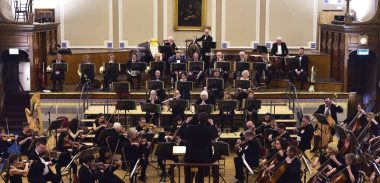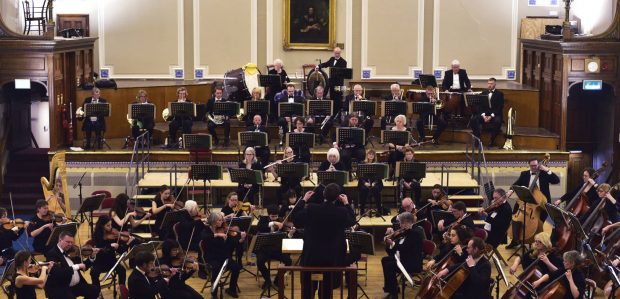 United Kingdom Various: Michaela Jones (viola), Todmorden Orchestra / Connor Lyster (conductor). Todmorden Town Hall, Calderdale, 23.3.2024. (RBa)
United Kingdom Various: Michaela Jones (viola), Todmorden Orchestra / Connor Lyster (conductor). Todmorden Town Hall, Calderdale, 23.3.2024. (RBa)

Shostakovich – Festive Overture
Walton – Viola Concerto
Vaughan Williams – Fantasia on Greensleeves
Tchaikovsky – Symphony No.4
Nick Concannon Hodges was struck down with severe pneumonia, so Connor Lyster took the podium for the orchestra’s Music for Spring concert. Lyster is a professional percussionist, studying for his Masters in conducting at Royal Northern College of Music. He is a rising name amongst the northern community orchestras.
The programme, played to the usual capacity audience, mixed soothing pastoralism, furious celebration and romantic fury. We opened with Shostakovich in brash mode …and when he is brash, there is no mistaking him. The crash and storm of the brief Festive Overture seemed to be much to the orchestra’s taste. It also gave them a boisterous thunderstorm of a piece to warm up for the rest of the concert. A few dicey moments at the start did nothing to mask the players’ exuberance. The overture’s quieter passages, including some withering pizzicato, registered amongst the predominant brashness; and let us not forget the upstart flute and clarinet solos. Towards the close, the writing recalled the more vivid work for the orchestra in the composer’s Second Piano Concerto.
Vaughan Williams’s Fantasia on Greensleeves has links with the opera Sir John in Love. It has over the years become something of a popular interlude. It was surely a template of sorts for Elizabethan Serenade. The Fantasia, very short and sweetly charming, harks back to the composer’s predilection for things Tudor (the Mass in G and the Tudor Portraits). The leisurely unreeling of the great tune was well set up by harp and flute, and it merited a special bow for each player at the end.
Though Mediterranean in atmosphere, Walton’s Viola Concerto has Northern ‘credentials’. He was an Oldham man. Beecham, who encouraged writing a concerto for what was in the 1920s an unusual solo instrument, was a product of St Helens. The work stands apart from the voluptuous irresistibility of the Violin Concerto, and above the less endearing profile of the Cello Concerto. Violist Michaela Jones presented its three poetic movements with earnest ardour. Lyster achieved a good balance: the viola spoke out of the milieu of a 65-strong band. Jones had a strikingly moving interaction in the first movement with the principal French horn. This score was the toughest technical challenge for the orchestra in this concert and proved the most ambitious.
After the intermission, the orchestra and conductor laid into Tchaikovsky’s Fourth with a will, with a flourish and with gales of romantic ardour. It is a popular work that demands these treatments and is a sure-fire audience pleaser. The sighing endearments of the slow movement registered well and the timpani player’s steady heart/drum beat gave an unerring foundation to the sweet endearments of this movement. The outer movements brimmed with adrenalin-drenched passion which recalled the crash of the Shostakovich overture. There were memorable episodes in them as the body of strings projected that death-defying Tchaikovskian ‘throb’. This is a mark of authenticity, determined preparation and dedication. Much the same can be said of the pizzicato movement before the onslaught of the finale.
Rob Barnett
